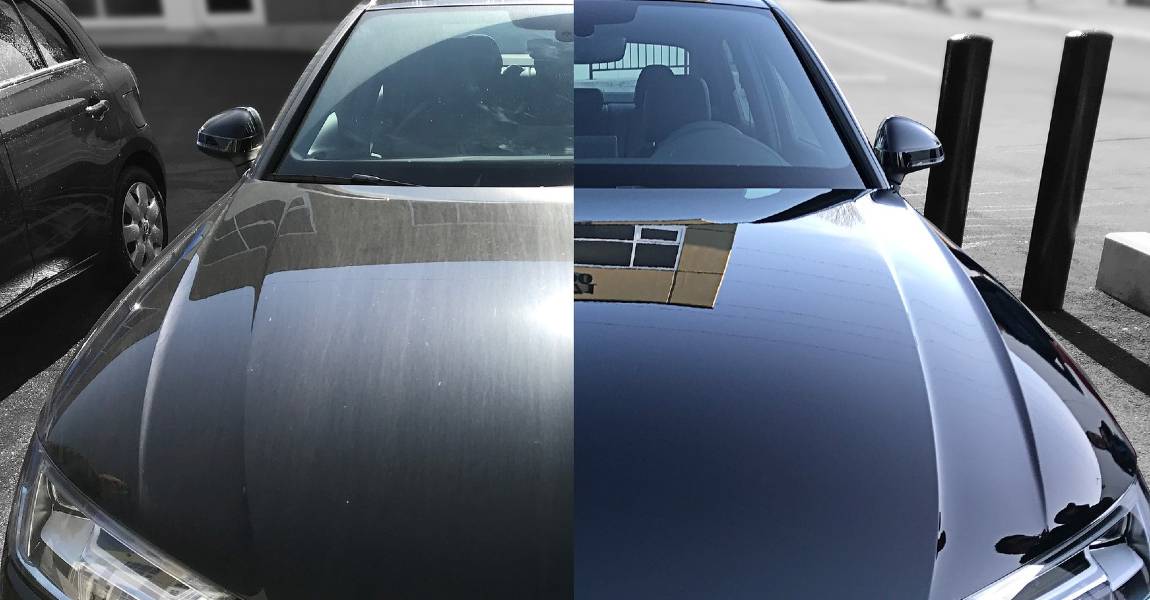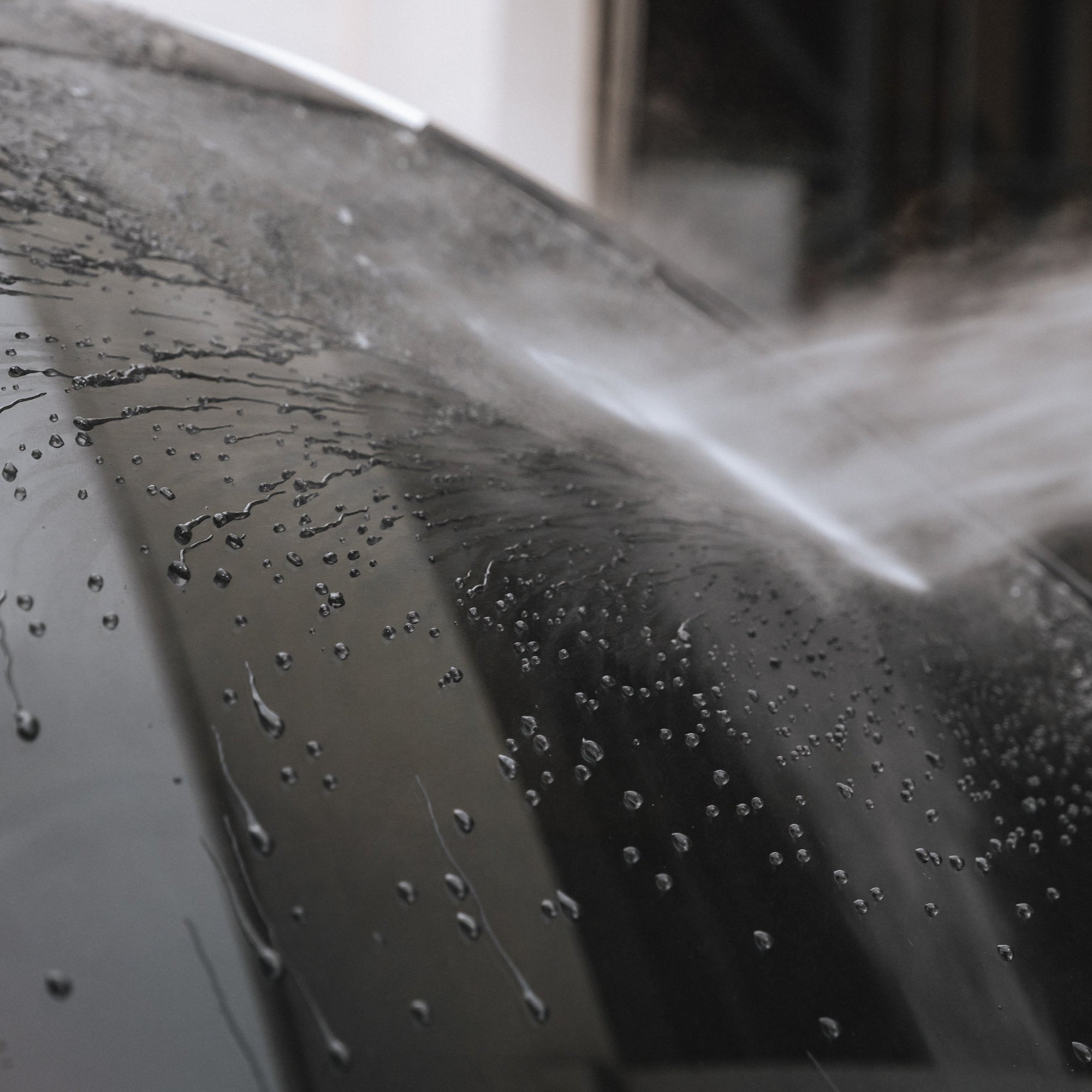The Relevance of Ceramic Coating: Protecting Your Cars and truck's Exterior With Precision
In an age where keeping the practical and aesthetic stability of your vehicle is paramount, ceramic covering arises as a critical service. With its unique bonding residential or commercial properties, ceramic covering uses a level of defense that far goes beyond standard waxing methods.
Advantages of Ceramic Coating
When it pertains to maintaining an auto's visual allure, ceramic finishing provides considerable benefits. This advanced safety layer gives a resilient guard versus environmental contaminants, consisting of dirt, grime, and dangerous UV rays. By developing a semi-permanent bond with the vehicle's paint, ceramic finishings efficiently stop oxidation and fading, ensuring that the car maintains a glossy, showroom-like coating for an extended duration. This not just enhances the car's aesthetic allure however additionally adds to its lasting value.
Along with its protective top qualities, ceramic coating uses exceptional hydrophobic properties, triggering water and other liquids to grain off effortlessly. This feature simplifies the cleaning process, as dirt and debris are less most likely to abide by the surface, reducing the regularity and effort required for maintenance. The finishing's resistance to chemical stains from acidic impurities like bird droppings and tree sap is an additional significant advantage, decreasing prospective paint damage.
Ceramic finishes also enhance scrape resistance, supplying a layer that can take in small abrasions and swirl marks. This characteristic is especially helpful in maintaining a pristine surface area, minimizing the chance of noticeable flaws and maintaining the stability of the auto's paintwork gradually.

Exactly How Ceramic Covering Functions
Comprehending the mechanics behind ceramic layer reveals its efficacy as a protective remedy for vehicles. Ceramic finishes are basically liquid polymer applications that chemically bond with a vehicle's manufacturing facility paint, developing a protective layer.
Application of ceramic finish includes a meticulous procedure. This guard improves the auto's gloss and hydrophobic properties, facilitating much easier cleaning by triggering water and impurities to bead and slide off easily.
In addition, the covering's molecular structure supplies resistance to small scratches and chemical spots. Unlike waxes or sealants that rest on top of the paint, ceramic finishings incorporate with the surface, providing resilient defense. This assimilation is essential to its performance, ensuring the car's surface continues to be pristine for years.
Contrasting Ceramic Coating to Alternatives
In the world of auto protection, ceramic layer stands as a formidable option when compared to conventional alternatives such as waxes and sealants. While waxes use a short-lived glossy coating, typically lasting just a couple of weeks to months, ceramic coatings give a longer-lasting solution, commonly enduring for years. This resilience is attributed to the chemical bonding that occurs when ceramic coverings are applied, forming a strong layer that is immune to environmental risks.
Contrastingly, sealers, although original site even more durable than waxes, still fall brief of the durable security provided by ceramic finishes. Sealers can typically last for up to a year, providing an artificial guard against specific elements. However, they do not have the exceptional hydrophobic buildings and UV security that ceramic coverings supply.
Additionally, ceramic layers use boosted scrape resistance, which neither waxes neither sealants can effectively match (ceramic coating). This is specifically helpful in preserving a car's immaculate appearance. Additionally, ceramic coatings streamline upkeep efforts by lowering the adherence of dirt and crud, consequently helping with less complicated cleaning. In recap, while traditional waxes and sealers supply fundamental protection, ceramic finishings offer an extensive, lasting solution that substantially maintains the car and improves's outside finish.
Application Process Explained
Applying ceramic coating to a vehicle calls for a careful process to ensure optimum results and durability. Once cleansed, the car is dried and brightened to eliminate any kind of flaws, as any type of existing swirls or scrapes can become extra noticable after the covering is used.
Following surface area preparation, the application of the ceramic coating starts. The covering is commonly applied in a climate-controlled environment to avoid dust fragments from deciding on the freshly cleaned up surface area. Using an applicator pad, the ceramic layer is applied in tiny sections to make sure even protection. It is essential to adhere to the producer's standards regarding the proper curing time and application thickness.
After application, the finishing calls for a specific treating period, throughout which the vehicle ought to be protected from water and contaminants. This curing process can vary relying on the product yet typically varies from 24 to 48 hours. Eventually, this in-depth procedure is pivotal in attaining a resilient and glossy surface.
Upkeep Tips for Long Life
To preserve the longevity of a ceramic covering, adherence to a regimented maintenance regimen is vital. Prevent automatic vehicle washes, as their severe brushes can jeopardize the covering's integrity.
Post-wash, drying out the lorry with a tidy microfiber towel avoids water areas that may degrade the layer with time. Furthermore, apply a ceramic layer booster every couple of months. These boosters strengthen the hydrophobic buildings and improve the finishing's protective capacities, ensuring it stays efficient versus pollutants.
Keep in mind that vehicle parking locations play a critical duty in upkeep. ceramic coating. Whenever possible, park in shaded locations to reduce UV direct exposure, which can slowly weaken the finish. For lasting storage space, take into consideration using a car cover for added defense against environmental components
Final Thought
In conclusion, ceramic finish serves as a critical protective layer for car exteriors, using durable protection against blog environmental variables such as dust, gunk, and UV rays. By developing a semi-permanent bond with the paint, it enhances visual charm while maintaining the automobile's worth. Its hydrophobic residential or commercial properties promote simpler maintenance, identifying it Click Here from alternative protective techniques. Recognizing the application procedure and adhering to maintenance recommendations are vital for making the most of the durability and performance of ceramic layer.
When it comes to maintaining a vehicle's aesthetic appeal, ceramic coating offers substantial benefits. By developing a semi-permanent bond with the lorry's paint, ceramic coatings properly protect against oxidation and fading, making sure that the cars and truck preserves a glossy, showroom-like coating for an extensive period. Ceramic coverings are essentially fluid polymer applications that chemically bond with a cars and truck's factory paint, creating a protective layer. In recap, while standard waxes and sealants offer standard defense, ceramic layers offer a thorough, lasting remedy that dramatically boosts and maintains the automobile's exterior coating.
